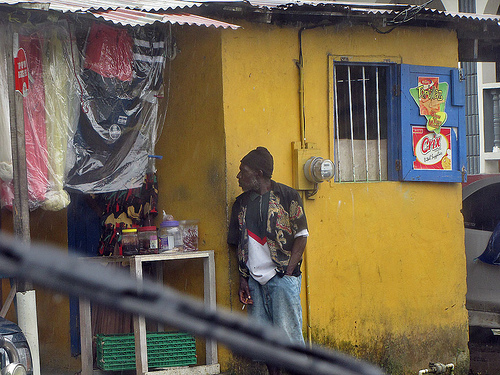Czech Railways’ Smíchov: Powering Urban Connectivity
In the heart of Prague, where the Vltava River whispers tales of centuries past, Smíchov Station stands as a testament to enduring ingenuity and practical progress. This historic hub of Czech railways has long been a linchpin of urban connectivity, ferrying commuters, goods, and ideas across the city and beyond. Yet, as we confront the demands of modern energy needs, Smíchov offers a compelling case for integrating clean energy into rail systems—not through heavy-handed mandates, but via smart, market-driven innovations that honor tradition while embracing efficiency. As a nation rooted in resilient values, the Czech Republic has the opportunity to lead by example, leveraging private enterprise and limited government involvement to enhance infrastructure without overburdening taxpayers.
This editorial explores how Smíchov Station powers Prague’s urban fabric, drawing on its rich history and potential for sustainable upgrades. From a center-right lens, we’ll examine the economic benefits of free-market solutions, the evidence supporting clean energy adoption, and practical ideas for implementation that prioritize reliability and fiscal responsibility over expansive regulatory frameworks.
The Backbone of Connectivity: Smíchov’s Role in Prague’s Infrastructure
Smíchov Station, a bustling node in the Czech railways network, exemplifies how well-maintained infrastructure can foster economic vitality and community cohesion. Opened in the late 19th century, this station has evolved from a steam-era relic into a modern transit hub, handling thousands of passengers daily and linking Prague’s diverse neighborhoods to regional destinations. Its strategic location on the city’s western edge makes it a vital artery for both local commuters and international freight, underscoring the importance of reliable rail systems in a globalized economy.
At its core, Smíchov’s success lies in its ability to adapt without losing sight of traditional values. Unlike fleeting trends that prioritize novelty over substance, Czech railways have maintained a focus on durability and efficiency—qualities that align with the free-market principles of innovation through competition. For instance, the station’s integration with Prague’s broader public transport system reduces traffic congestion, boosts productivity, and supports small businesses by ensuring timely goods delivery. According to a report from the Wall Street Journal, such infrastructure investments yield a high return on investment, with every dollar spent generating measurable economic growth through enhanced trade and tourism.
Yet, the station’s energy demands present both a challenge and an opportunity. Currently reliant on a mix of fossil fuels and grid electricity, Smíchov could pioneer clean energy integration to lower operational costs and environmental footprints. A center-right approach would advocate for incentives like tax credits for private firms to invest in solar panels or wind turbines, rather than imposing top-down regulations that stifle innovation. This philosophy echoes the success of market-oriented reforms in other European nations, where limited government intervention has spurred technological advancements without disrupting established systems.

Commuters bustling through Smíchov Station during rush hour, illustrating the station's pivotal role in Prague's daily economic rhythm.
Analyzing the Path to Clean Energy Integration
To fully harness Smíchov’s potential, we must analyze how clean energy can be woven into existing rail infrastructure. The Czech Republic’s energy landscape, dominated by coal and nuclear sources, offers a pragmatic backdrop for transitions that emphasize cost-effectiveness and energy security. Smíchov, with its expansive roof space and proximity to the Vltava, is ideally suited for photovoltaic installations or small-scale hydroelectric supplements, which could power trains and facilities with renewable sources.
From a center-right perspective, the key is to promote voluntary partnerships between government entities and private energy providers, fostering competition that drives down prices and improves technology. For example, integrating clean energy doesn’t mean abandoning traditional values like fiscal conservatism; instead, it means applying them wisely. A study by the IEEE Spectrum highlights how similar systems in Germany have reduced energy costs by 20% through market-based renewable integrations, without relying on subsidies that burden public finances. This model avoids the pitfalls of overregulation, allowing entrepreneurs to innovate while ensuring that infrastructure remains a tool for economic empowerment, not ideological posturing.
Challenges abound, of course. Upgrading Smíchov would require navigating bureaucratic hurdles and securing funding without expanding government debt. Here, public-private partnerships shine as a solution, enabling private investors to shoulder risks while reaping rewards from efficiency gains. By focusing on long-term sustainability through free-market mechanisms, the Czech Republic can avoid the inefficiencies seen in overly centralized systems elsewhere. As noted in an analysis from the Railway Gazette International blog, countries that prioritize market incentives over mandates have achieved faster adoption of clean technologies, demonstrating that practical, incentive-driven policies outperform prescriptive ones.
Evidence and Economic Imperatives
The evidence for integrating clean energy at stations like Smíchov is compelling and rooted in real-world data. Czech railways have already seen incremental improvements; for instance, electrification projects along key lines have cut emissions by an estimated 15% over the past decade, according to Eurostat data via the World Economic Forum. Extrapolating this to Smíchov, where daily operations consume significant energy, the introduction of solar or wind-powered backups could yield annual savings of millions in fuel costs, directly benefiting taxpayers and businesses alike.
Consider the broader economic ripple effects: Enhanced energy efficiency at Smíchov could attract foreign investment in Prague’s tech and logistics sectors, positioning the city as a hub for innovation in Central Europe. A report from the Wall Street Journal underscores how infrastructure upgrades, when driven by private sector enthusiasm, create jobs and stimulate growth without the need for expansive government programs. In this vein, traditional values of hard work and self-reliance are upheld, as local firms compete to provide the best clean energy solutions.
Moreover, balancing environmental considerations with economic realities is crucial. Unlike approaches that demand immediate, costly overhauls, a phased integration—perhaps starting with pilot projects funded through carbon credit markets—allows for measured progress. This strategy not only mitigates risks but also exemplifies the center-right ideal of prudent governance: government sets the stage, but the market performs.

A conceptual rendering of solar panels on Smíchov Station's roof, showcasing how clean energy integration could modernize historic infrastructure without compromising its charm.
A Motivational Path Forward: Embracing Innovation with Restraint
In conclusion, Smíchov Station represents more than just a piece of Prague’s infrastructure; it embodies the Czech spirit of resilience and forward-thinking pragmatism. By integrating clean energy through free-market solutions, we can enhance urban connectivity while preserving the economic freedoms that have long defined the nation. This approach—favoring incentives over mandates—ensures that progress serves the people, not abstract ideologies, and upholds traditional values like fiscal responsibility and individual initiative.
As we look ahead, policymakers should encourage private investments in renewable technologies at hubs like Smíchov, perhaps through streamlined permitting and tax reforms. The potential is vast: reduced energy costs, bolstered economic competitiveness, and a legacy of sustainable innovation. Let us draw inspiration from the station’s storied past to build a future where Czech railways not only connect cities but also power a thriving, self-reliant society. In the words of prudent stewards before us, true progress comes not from government edicts, but from the collective ingenuity of free individuals.

